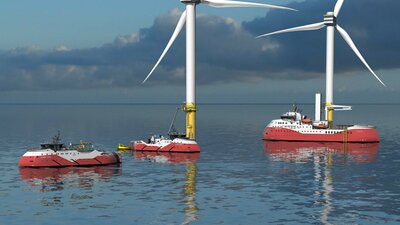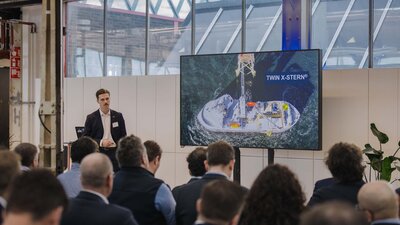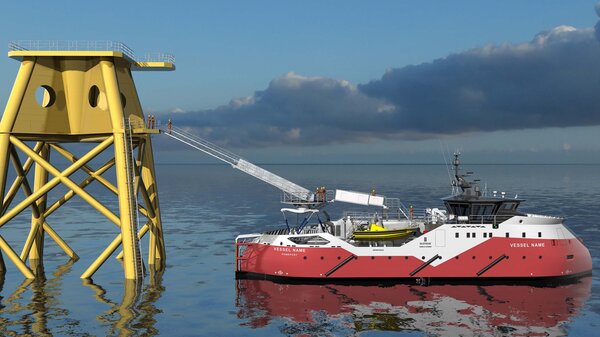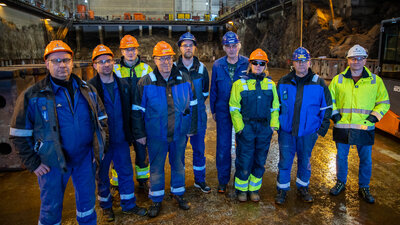
Before Henrik took the stage, the room was buzzing with debate about the limitations of using significant wave height (Hs) as the sole operational metric. Henrik addressed this head-on, pointing out that safety is about vessel motions, not just wave height.
Most SOVs today are oversized and underutilised,
he said.

Eureka moments and great discussions
The presentation generated engagement and several “aha” moments among participants. The comparison illustration between an SX222 CSOV and an SX250 vessel particularly helped many realise that the SX250 is not a replacement for larger vessels, but a complementary alternative that can solve challenges related to cost, infrastructure, and efficiency.
This is not downsizing; it’s right-sizing,
he emphasised.
Henrik joined several constructive discussions following his talk.

Why SX250?
The SX250 is designed for smaller, cost-sensitive assignments, providing operators with the option to combine one CSOV with one or two SX250s instead of two large vessels. This provides flexibility and reduces both costs and emissions without compromising safety.

SX250 at a glance
- 50–60% lower investment cost than a CSOV
- 50% lower fuel consumption (confirmed by CFD analyses)
- Transfer height: 10–25 m, operability up to 2.4 m Hs
- Flexible platform for smaller, cost-sensitive assignments

The future of offshore wind logistics
The discussions at the conference showed that the industry is ready to think differently: not “how big?”, but “how smart?”. The SX250 is an answer to the need for more efficient and sustainable solutions, and Henrik’s presentation helped put this firmly on the agenda.
(SOV = Service Operation Vessel, CSOV = Construction Service Operation Vessel)



